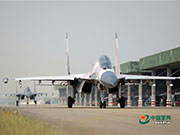

The above trends have also given several indications: firstly, the pronouncement has changed China wait-and-see attitude into an assertive and in-the-front attitude. China attitudes over the past decades has been portrayed with defensive intent in order to blunt destabilizing influences from abroad, to avoid territorial losses, and to reduce its neighbors’ suspicion. With this pronouncement, China has been overtly projecting its influence by promoting China’s leadership and decided to provide alternative to the institution that has been lauded as US-led institutions such as the World Bank, the WTO, and the IMF. This would be done especially by its leadership in terms of creating order of infrastructure investment by disbursing its massive foreign exchange reserves in a more productive way in order to fund infrastructure development projects to its adjacent regions such as Central Asia, South Asia and Southeast Asia that are in dire need of infrastructure’s fund.
War of Influence
The risk of failure is great, but the high-speed rail project was one that China required in order to build up its credibility and compete against similar foreign infrastructure investment. This victory would provide China at least three opportunities: 1) to boost morale and build up credibility of its 21st Century MSR; 2) to reverse distrustful sentiments towards China’s investment in Indonesia and Southeast Asia in general; and most importantly 3) this victory and success of the project would open up future opportunities for China to invest in Indonesia and Southeast Asia.
As the first pilot project for the MSR, the losses would have brought the down of morale and losing credibility for its next project to come. This is especially so after the failure of potential high-speed rail deal in November 2014 in Mexico. China needs to prove its ability to build, especially to compete with Japan that has similar intention and rich experience investing in ASEAN. It appears that Tokyo has tried to counterbalance Beijing’s attempts enhance and deepen its influence in Asia Pacific. In May 2015, Mr. Abe has announced his plan to deepen ties with Southeast Asia countries via financing of infrastructure projects with 30 percent target of increase over the next five years. Japan has also deepened its maritime ties with the Philippines and Vietnam that were in opposition with China with regard to its South China Sea’s territorial dispute. Japan seemingly does not want to accept Chinese primacy and is interested to preserve the political and strategic independence of countries in Southeast Asia by providing an alternative to China.
One of the major obstacles that China has to face is a lack of confidence over China’s commitment and quality of its product. Major opposition in Indonesia to accept China’s proposition was due to a low ratio of realization of China’s investment that according to the Indonesia’s Investment Board statistics was only around 7 to 10 percent from the promised commitment. Therefore, the success of this project would open opportunities of other projects in Indonesia and other countries in Southeast Asia. In Indonesia alone, this project will be tied to other projects such as the development of an export oriented railway carriage factory. China’s ability to be flexible accommodate the needs of a ruling regime has also become its strongest appeal for the developing countries of the region, especially ones with an unstable political regimes. China can do attitude without conditionality has position its offer better than other countries. China is also eyeing other high-speed rail projects like the one linking Kuala Lumpur and Singapore.
China’s victory in taking over the high-speed rail project from Japan was merely a small part and parcel of its plan to enlarge its footprint in Southeast Asia and realizing its 21st century MSR.
Emirza Adi Syailendra is a Research Analyst at the Indonesia Programme of the S.Rajaratnam of International Studies (RSIS), Nanyang Technological University in Singapore.
 |
Day|Week

 118-meter-high Never-used Building in NW. China Demolished
118-meter-high Never-used Building in NW. China Demolished J-10B fighters with homegrown engine in test flight
J-10B fighters with homegrown engine in test flight 10 tons of copper coins unearthed in 2,000 years old ancient tomb
10 tons of copper coins unearthed in 2,000 years old ancient tomb Beautiful graduate from police college becomes Internet hit
Beautiful graduate from police college becomes Internet hit Photos of U.S. Navy intruding in South China Sea released
Photos of U.S. Navy intruding in South China Sea released What is inside China's icebreaker ‘Xuelong’?
What is inside China's icebreaker ‘Xuelong’? Chinese, U.S. navies hold first-ever joint exercise in the Atlantic
Chinese, U.S. navies hold first-ever joint exercise in the Atlantic In pics: skies of glory
In pics: skies of glory J-10, J-11, Sukhoi Su-30 fighters vs. HQ-9 anti-aircraft missile system
J-10, J-11, Sukhoi Su-30 fighters vs. HQ-9 anti-aircraft missile system Russian plane crash victims sucked out of seats as 'external impact' blew jet apart
Russian plane crash victims sucked out of seats as 'external impact' blew jet apart